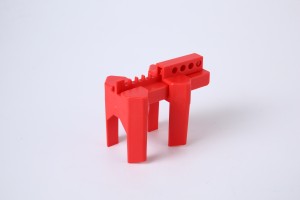Valve locks are mainly used to lock valves and protect their safety.
The function of valve lock:
Valve locks belong to a category of industrial safety locks. Their purpose is to ensure that equipment using valves is absolutely closed and the equipment remains in a safe state. Using locks can prevent equipment from being accidentally started, causing injury or death. Another purpose is to serve as a warning.
Classification of valve locks:
Commonly used valve locks are divided into ball valve lockouts, butterfly valve lockouts, gate valve lockouts, rotary valve lockouts, universal valve lockouts, etc.
The ball valve lockout is mainly used to lock the ball valve and protect the safety of the ball valve.
The gate valve lockout is suitable for locking the gate valve and can better protect the safety of the gate valve.
The butterfly valve lockout is suitable for locking all butterfly valves of common specifications to better protect the butterfly valve switch and prevent accidental accidents.
Selection of valve locks:
The products of valve locks on the market are also uneven, good and bad. Many corporate purchasers are at a loss when choosing valve locks. Therefore, users should understand some common sense when choosing locks, so that they can choose the right valve locks.
1. You should choose big brands or brand agents that are well-known and have a long history, because they have enough economic strength and a stable network system to guarantee service and after-sales, and avoid disputes caused by product quality issues.
2. Valves are divided into ball valves, butterfly valves, gate valves, rotary valves, etc., so when selecting a valve lock, you should also clarify the required valve type.
3. Valve locks can be made of a variety of materials. Choose the appropriate lock according to the environment in which the lock is used, such as air dryness and humidity, whether it is high temperature, and whether it needs to be acid and alkali resistant.
4. Look at safety standards. There are very strict standards for hardware locks at home and abroad. Small manufacturers will not comply with the standards in order to save costs, while big brands generally comply with the standards.
5. Valve size. Different valves consider different sizes. Choose matching valve locks.
6. Check whether the labels and signs on the valve lock package are complete, whether the packaging is firm, whether the instructions in the instructions are consistent with the product, and be careful to prevent exaggeration that is inconsistent with the facts.
Post time: Jan-08-2024

